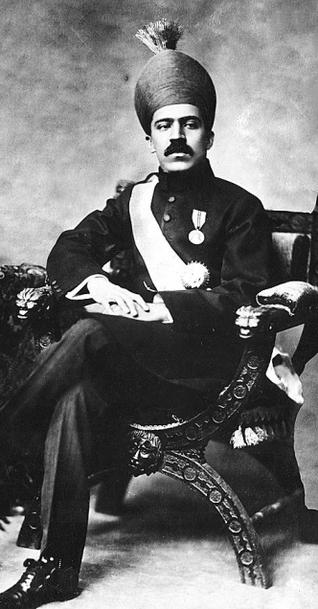There is utter bedlam. Expensive cloth is scattered all over. Scores of tailors are at work — frantically cutting cloth with trouser and shirt pieces lying in various stages of stitching.
Amid all this disarray, a suited gentleman, pipe in hand, is hollering around.
The shop in Secunderabad is busier than a beehive. Is there a meaning to this madness?
Yes, if you only know who the tailor is and the job at hand. Put the clock back by 62 years and the pieces of jigsaw puzzle fall in place.
Mir Osman Ali Khan, the Seventh Nizam of Hyderabad. / The Hindu /
December 24, 1950. The time is 6 p.m. John Burton has just had an audience with the seventh Nizam, Mir Osman Ali Khan.
And he is faced with the million dollar question — how to cope with the ‘shahi hukum’ (royal order).
Tall order
It’s a tall order indeed. Sixty overcoats and an equal number of trousers and shirts to be stitched and delivered in less than six hours – just in time for the midnight mass.
“That explains the mortal hurry,” says M.A. Qaiyum, former assistant director, Archaeology and Museums Department, recalling the event.
A difficult command no doubt, but not altogether impossible.
Especially for John Burton, the Scottish tailor par excellence.
Did he rise to the occasion? Yes, he certainly did.
Tailors summoned
It only meant summoning all the tailors in the town and working like mad.
When appointed as the royal outfitter, Burton knew that none could say ‘no’ to the Nizam. Schedules had to be kept and eccentric demands met – even at short notices.
Donning a black suit, the Nizam trooped into the St. Joseph’s Cathedral at Gunfoundry along with 60 courtiers in time for the midnight mass. Osman Ali Khan was a frequent visitor to this church and often attended the mass.
The clock on the tower, the European oil painting of the Blessed Mother and Christ as a child and the chandeliers were gifted by him in February 17, 1953.
The man who called Hindus and Muslims his two eyes, was generous with donations, though he was personally frugal.
Recipients of his munificence included mosques, temples, churches and gurdwaras. The Nizam even penned a Christmas poem in Persian. Its English translation by Sir Nizamath Jung reads thus:
What was Jesus’ mission, Osman?
Ask them whom He came to guide
Gave His life for their redemption
For His flock he gladly died!
source: http://www.TheHindu.com / Home> News> Cities> Hyderabad / by J. S. Ifthekhar / December 25th, 2012
